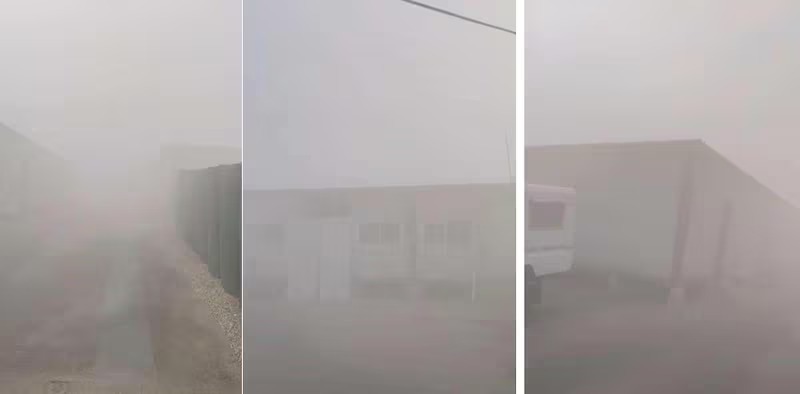Middle East
White phosphorus allegedly used by Israel near UN base, says report

Fifteen UN peacekeepers have been treated for injuries after Israel allegedly used white phosphorus near a UN base in southern Lebanon, according to a confidential United Nations (UN) report.
Israel, which has previously used white phosphorus in southern Lebanon, is suspected of carrying out similar attacks on UN bases in the same area. UN reports state that 15 peacekeepers were hospitalized following the attack earlier this month.
The report, obtained by The National, indicates that the bases—part of the UN Interim Force in Lebanon (UNIFIL)—were deliberately targeted by Israeli forces. It details how light towers and watchtowers were fired upon, resulting in injuries to peacekeepers.
White phosphorus is a toxic chemical that can cause severe respiratory damage and organ failure if inhaled, and serious burns upon contact with skin. As a highly flammable substance, it can reignite weeks later when exposed to oxygen, causing fires and destruction to civilian infrastructure and agricultural land.
On October 13, UNIFIL reported that two Israeli tanks entered a UN base, creating a security crisis. Approximately 45 minutes after the tanks withdrew, peacekeepers heard an explosion and saw thick smoke billowing from the northern part of the base.
Despite wearing protective masks, 15 peacekeepers affected by the smoke experienced skin irritation and gastrointestinal distress, according to the report. It noted that “suspected white phosphorus” was the cause of the smoke.
White phosphorus is not banned under international law, and the U.S. maintains that its military use is legitimate. However, human rights organizations argue that its intentional use against civilians could constitute a war crime.
Pentagon Press Secretary Major General Pat Ryder declined to comment on the report but noted that white phosphorus can be used “as a signalling capability or to focus on targets,” adding that it has “legitimate uses in combat operations.”
The alleged Israeli use of white phosphorus at UNIFIL bases dates back to November 2002, and was reported to the UN Security Council in March.
Photographs in the report show tanks breaching the gates of the UN base, damaging its walls, with white smoke filling the air. Images also depict wounded Indonesian peacekeepers. The 10-page report concluded that the Israeli army had “deliberately” attacked UNIFIL bases.
On October 10, two Indonesian peacekeepers were injured when an Israeli Merkava tank fired on an observation tower at UNIFIL headquarters in Naqoura. On the same day, Israeli forces opened fire on the UN base in Labbouneh, striking the entrance to a bunker housing Italian peacekeepers and damaging vehicles and the communications system.
The following day, two more UN peacekeepers were wounded in an Israeli attack near their watchtower in southern Lebanon.